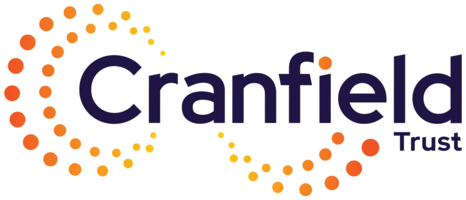
Working in a non-profit organisation can be rewarding and exhausting. According to Statista, the number of non-profit organisations in the UK rose to around 168,237 in 2018 from 159,845 in 2000. Research from the UK civil society also shows the number of charities has grown steadily since the 1960s with at least 2,500 new organisations registered every year.
With this in mind, it’s no wonder human resources departments in small to medium-sized non-profit organisations can have a tough time competing with their for-profit counterparts.
It’s useful to be able to identify and understand the challenges facing HR teams in non-profit organisations. From pay packages to limited resources to recruitment and internal communication, there are a number of challenges employees in an HR department will need to consider.
In this post, we explore five challenges to small and medium-size not-for-profit organisations are facing and how to address them.
Role of HR in Non-profits
Apart from the ‘profit’ in non-profit, there’re a number of other differences between for-profit and non-profit organisations.
While all organisations have similar HR needs and challenges, in a not-for-profit organisation, finding solutions to these issues can prove to be difficult. The most common obstacle for small and medium-sized charities is not having a dedicated and experienced HR employee. In most cases, HR responsibilities fall on the charity CEO or other senior members of the charity. Other challenges include access to financial resources, to attain or retain volunteers.
In terms of HR, however, while HR staff in for-profit businesses will need to keep an eye out on the company’s profits, those working in not-for-profit organisations are more mission-driven. The most important aspect of any charity organisation is their overall goal. With support from HR, the CEO’s responsibility is to ensure that the organisation’s goals are alive in all of its employees.
They do this from the get-go by reflecting their mission into the job description, training, procedures, policies and offering employee well being programmes. This is to give employees a picture of the organisation and how they’ll fit into it.
5 HR challenges for charities

1. Recruitment of trustees: As if recruiting wasn’t hard enough, it becomes even more of a struggle when recruiting for a position with no financial rewards. It’s not uncommon for small and medium-sized charities to face challenges when recruiting trustees.
The job of the trustee is to ensure that the goals of the charity and all work completed by them are aligned with their overall vision. They play an important role in ensuring that all efforts carried out by the charity benefits the people that they’re there to support.
Research into the recruitment of trustees conducted by Getting on board shows that while over half of the UK’s 200,000 charities are currently recruiting for trustees, a majority of them experience challenges with equality and diversity during the process.
According to Charity Jobs, only less than 10% of all trustee vacancies are actually advertised. This is because many charities rely on word-of-mouth which then limits their reach as they’re only looking within their existing networks.
This form of recruitment can prove damaging to charity organisations. By only hiring inside their network, they’re limiting the effectiveness, leadership and decision making of the charity. Which then causes a lack of representation for their communities and service users.

2. Volunteer management: Volunteers give their time for a number of reasons including to give back to the community, to support a cause they believe in, wanting to make a difference to society among other things.
While effectively managing your volunteers is essential for non-profit organisations, it does bring its own set of challenges.
The first challenge for the volunteer manager is recruiting for the position. Even after the recruitment process, it can become a bit of a struggle to identify the volunteer’s skillsets, assign them tasks based on their interests and even tracking their performance and productivity due to the perpetual constraints of time and resources.
There’re also concerns relating to their value within the charity. Because of the limited time most volunteers have to offer, it can be challenging to offer them more involved tasks to carry out. This means that they’re not able to take part in tasks that involve decision making or advance to a leadership position.
The above leads nicely to the next challenge which is volunteer burnout. This is due to the limited availability of opportunities for growth and variety in tasks.
3. Pay and benefits: According to a report by the Guardian, at 3.1%, wages for employees in the UK are at the highest they’ve been in almost a decade.
With regards to the charity sector, this means they’ll have to step their game up to attract staff and compete with for-profit businesses. Although job satisfaction is a major motivator for employees, their pay packages also play a major role in their happiness within an organisation.
Where organisations are unable to match salary increases, charity leaders could consider softer benefits such as flexible working, career development, wellbeing programmes, employee discounts, a day off on your birthday, subsidised gym memberships and more.

4. Satisfaction and retention levels: Attention to the importance of good physical and mental health and employee wellbeing is growing in both for-profit and non-profit organisations.
The main reason most people choose to work for charitable organisations is that they believe in their cause and mission. However, a major HR challenge involves maintaining their employee’s wellbeing, engagement and satisfaction.
Due to various cuts (funding, government, benefits, etc.), charities are experiencing increased demands for their services which adds more pressure on their staff which then leads to more sick leave and people simply leaving the sector.
With this in mind, it’s important that charities are not overlooking the mental health of their staff. It’s more straightforward in for-profit businesses as they can focus on compensation and pay incentives, career development, training opportunities, invest in employee assistance programmes and more.
However, non-profits may struggle to match this as they’ll need to provide these programmes at a cost that’s sustainable over an extended period of time. With free HR management services like HRNet, charities and other social enterprises are able to manage more complex employment situations without breaking the bank.
It can help to identify the areas within the organisation where they can focus their limited budgets for the most return.

5. Brexit: This list wouldn’t be complete without mentioning Brexit.
In 2018, the National Council for Charity Organisations (NCVO) conducted research into the potential long and short term effects of Brexit on the voluntary sector.
There’s still some uncertainty as to how it’ll affect organisations, least of all non-profits. That being said, the NCVO research did highlight some areas where charities and other non-profits will be most affected, areas include:
Economic impact: While unable to predict the long-term impact of Brexit on the economy, it’s safe to assume that in the short-term there’ll be uncertainty and economic volatility. It’s also worth remembering, during a time of economic uncertainty, it’s not uncommon for the demand for charity services to increase.
EU funding: For organisations that have previously received funding from the EU, it’s important for them to think about the long-term ramifications that losing this funding may have on their organisation. So with that in mind, the government confirmed that they’ll underwrite funding for all organisations (even if we leave Brexit without a deal) that have secured it through existing programs. Programmes include EU structural funds, EU regional development funds and Horizon 2020 and more.
Employing EU nationals: Research conducted by the Institute of Public Policy Research found that after Brexit, over 80% of EU national that are currently working in the charity sector would be ineligible to work in the UK.
Opportunities ahead: The transposition of many EU rules into domestic law after the UK has left the EU presents charities with an opportunity to engage and lead the discussion about policy landscape and direction of the sector post-Brexit. Areas where policy change may affect voluntary organisations include VAT, reform state aid, public procurement and shared prosperity fund.
Conclusion
Successful HR personnel in non-profit organisations recognise the importance of employees and their motivators. It’s useful to be able to identify and understand the challenges facing HR teams in non-profit organisations in the third sector. With this information, HR teams are able to partner with business leaders to effectively communicate on all levels.
They’re also able to ensure the values and beliefs of the organisation are aligned with those of their employees.
For the thousands of charities without a dedicated HR person, services such as ACAS, who provide employees and employers free, impartial advice on workplace rights, rules and best practice are invaluable. Having a dedicated HR person is of course the dream. But services like ACAS and Peninsula’s commercial HR services are relied on by charities all over the UK, every day.








